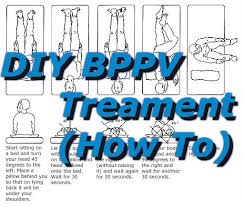BPPV is a common disorder, typically easily treated once identified. The vast majority (over 90%) of cases of BPPV involve free floating debris in the posterior canal on one side. These types of BPPV responds well to the Epley maneuver. There are other, less common and less easily-treated variants of BPPV.
Occasionally, the debris will settle in the horizontal canal. The most likely complaint that would indicate horizontal canal rather than typical posterior canal is that horizontal canal is triggered more by rolling over in bed, and the vertigo is triggered ON BOTH SIDES. Diagnostically, the nystagmus elicited is horizontal rather than the rotary nystagmus seen in posterior canal BPPV.
Types of BPPV
There are two forms of horizontal canal BPPV, typically referred to as the GEOTROPIC (towards earth) or AGEOTROPIC (away from earth) form. This refers to the direction of the fast phase of the nystagmus elicited. For the GEOTROPIC form, the Epley maneuver performed with the head tilted up at 30 degrees is very effective. For the AGEOTROPIC form, we are still looking for an effective fix. This was a topic of discussion at the recent course I attended at Johns Hopkins.
During an excellent presentation by Michael Schubert, DPT on canalith repositioning, he demonstrated the Gufoni Manuever for AGEOTROPIC horizontal positional nystagmus. This pattern of nystagmus has generally been thought to be the result of cupulolithiasis of the horizontal canal, located on the side demonstrating the less intense nystagmus. Cupulolithiasis is a variant of BPPV where the debris is not free floating, but has adhered to the cupula at the end of the canal.
Others believe this pattern may suggest canalithiasis, with free floating debris located close to the cupula in the horizontal canal. The Gufoni maneuver is based on this second theory, with a series of head movements intended to move the debris closer to the canal opening to the vestibule.
BPPV Treatment Success
Dr. Schubert reported Gufoni’s same day success rate at around 80%. I asked him if he achieved similar results, as I have used the Gufoni maneuver on these patients with far less than 80% success rate. He smiled, and acknowledged that 80% was probably optimistic (maybe not for Gufoni himself).
A quick survey across the room found that others were frustrated with the low success rate in re-positioning patients with ageotropic horizontal positional nystagmus. It was suggested that maybe those that do not respond to repositioning may have something other than, or in addition to, BPPV going on. The good news was that most people I talked to found that the vast majority of these patients would return after one week of home BBQ roll exercises with reduced nystagmus and improved symptoms.







